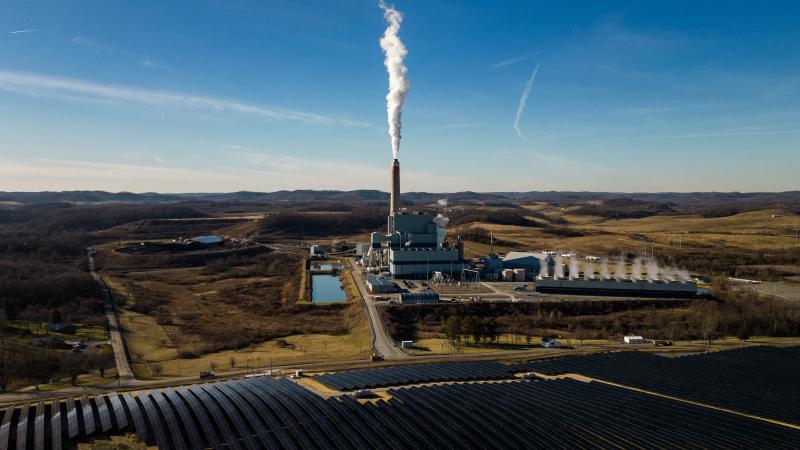Renewables provided 30% of energy in 2023, but data disputes claims of an overall energy transition
While the report takes the 30% record as proof of the coming demise of fossil fuels, a closer look at the data over the last 30 years suggests it could be over five centuries at the current rate of reduction before use of fossil fuels reaches zero, unless the rate of decline increases sharply.
A new report from Ember-climate.org, which describes itself as "an independent energy think tank that aims to accelerate the clean energy transition with data and policy" touting that renewable energy provided 30% of electricity generation in 2023 is getting a lot of attention, with reports in The Guardian, Associated Press, and Reuters, and CNN.
“A permanent decline in fossil fuel use in the power sector at a global level is now inevitable,” the report by Ember declares.
While the report takes the 30% record as proof of the coming demise of fossil fuels, a closer look at the data over the last 30 years suggests it could be over five centuries at the current rate of reduction before use of fossil fuels reaches zero, unless the rate of decline increases.
Deep dive
According to its website, Ember receives funding from several environmental and anti-fossil fuel groups, including The Sunrise Project, the Climateworks Foundation, and the Environmental Defense Fund.
Ember’s “Global Electricity Review 2024” is the fifth-annual assessment of sources used for global electricity production. Last year’s 30% record was an increase of 19% over 2000.
Wind and solar accounted for 13.3% of the 30%. Hydroelectric produced 14%, and the rest is bioenergy, geothermal, and tidal energy. While included in renewable energy sources, bioenergy, which is burning of wood and other plant matter, produces more carbon dioxide emissions than coal, which Ember acknowledges.
David Blackmon, energy writer analyst, told Just The News that the growth of wind and solar isn’t even enough to meet increases in electricity demand.
“That's why studies like this feel the need to include wood … as a renewable, in order to artificially inflate the numbers,” Blackmon said.
The report notes that the amount of electricity generated from fossil fuels increased 0.8% in 2023, which was a record, and it accounted for 61% of all generation sources. There hasn’t been a decline in total electricity generated from fossil fuels since 2019, when there was a slight decline, and in 2020, when the pandemic drove down demand. Prior to that, the last time there was a drop was 2009. In both periods, generation from fossil fuels rebounded the following years to reach new record levels.
As a percentage of total generation, fossil fuels peaked out at 68.3% in 2007 and has declined to 61% last year. Per-capita generation from fossil fuels has increased 156% between 1992 and 2023.
“This transition is a myth. What we have is an energy diversification, an energy addition that’s barely keeping up with rapidly rising demand,” Blackmon said.
The picture of primary energy is overwhelmingly weighted toward fossil fuels. Primary energy is energy as a resource. It’s the raw, unprocessed inputs into the energy system, before it’s transformed into another type of energy. For example, coal is primary energy burned for electricity generation, which is secondary energy. Electricity is about 20.4% of the total energy consumed globally.
As a share of primary energy, fossil fuels accounted for 81.79% of the total energy consumed in 2022, the latest year for which data is available. This is down from 86.52% in 1992. Extrapolating the rate from this 30-year period, the globe will reach zero fossil fuel consumption in 518 years.
Primary energy from wind and solar accounted for 5.3% in 2022. Of course, the rate of decline in fossil fuel use could change for a variety of reasons, including new technologies like advanced nuclear reactors.
Other data
In an article on his Substack, energy expert Robert Bryce broke down the data on the energy transition into 10 charts.
“The concept of the energy transition is essentially a Western conceit,” Bryce wrote.
From 2004 to 2022, global spending on wind and solar totaled $4.1 trillion dollars, according to data from BloombergNEF and the Energy Institute’s Statistical Review of World Energy. In that time, total energy from fossil fuels increased 3.4 times faster than wind and solar.
Throughout the developing world, especially in China and India, coal-fired power plant capacity is rapidly increasing. China and India are producing eight times more electricity from coal than the U.S., and they have 168 gigawatts of coal-fired capacity under construction. For comparison, according to the Energy Policy Research Foundation, the U.S. has had a decrease of 95.6 gigawatts of coal-fired electricity generation capacity since 2015.
In the U.S., Bryce wrote, U.S. natural gas-fired generation — meaning the total amount of electricity generated from the source — grew 9.5 times faster than wind and solar combined between 2022 and 2023, in part because total generation from wind decreased 2.1% despite adding 6 gigawatts of new capacity.
Reports of an energy transition in the media, however, have rapidly increased. Bryce wrote that between 2019 and 2023, the use of the phrase “energy transition,” according to NewsBank’s Newspaper Database, increased 10-fold.
Blackmon said he expects the increases in wind and solar capacity to begin to slow in the coming years. Besides the expense and challenge of building transmission lines to connect wind and solar farms to the grid, environmentalist opposition to new mining projects needed to build wind turbines and solar panels will restrict supply chains and drive up prices.
With demand for electricity rising, Blackmon said, wind and solar won’t be able to keep up, and so more fossil fuels will be needed.
“I predict that this trend towards reducing the fossil fuel percentage of primary energy provision is actually going to reverse over the next decade, because you're going to need to keep all these coal plants and natural gas plants online just to feed the needs of AI and recharging electric vehicles,” Blackmon said.
The Facts Inside Our Reporter's Notebook
Links
- Ember-climate.org
- The Guardian
- Associated Press
- Reuters
- CNN
- report by Ember declares
- According to its website
- The Sunrise Project
- Climateworks Foundation
- Environmental Defense Fund
- produces more carbon dioxide emissions than coal
- Ember acknowledges
- energy writer analyst
- last time there was a drop was 2009
- fossil fuels peaked out at 68.3% in 2007
- fossil fuels has increased 156%
- Primary energy
- 20.4% of the total energy consumed globally
- 81.79% of the total energy consumed in 2022
- wind and solar accounted for 5.3%
- advanced nuclear reactors
- data on the energy transition
- BloombergNEF
- Statistical Review of World Energy
- according to the Energy Policy Research Foundation
- despite adding 6 gigawatts of new capacity
- NewsBankâs Newspaper Database
- expense and challenge of building transmission lines
- environmentalist opposition to new mining projects















